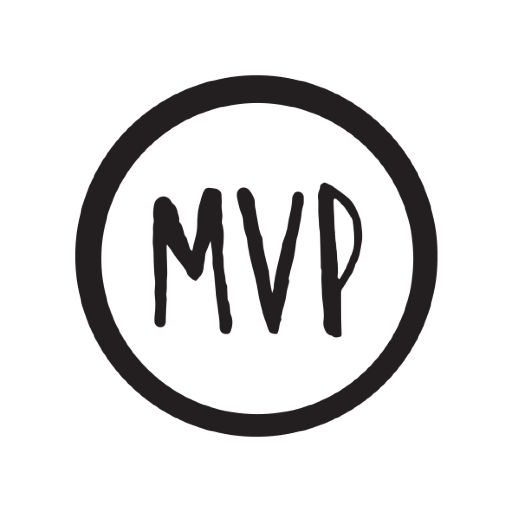Guest Post by: Hansa Vagadiya (Mentee, Session 4, The Product Mentor) [Paired with Mentor, Ladislav Bartos]
Recently, I participated in a product management mentorship program run by The Product Mentor.
Ladislav Bartos, who was assigned to me as my inspirational mentor, has been working with me to further hone in on my product management skills. I have improved my stakeholder management techniques; learnt about service design thinking and enhanced my Google Analytics knowledge. But the most important thing the product mentorship can unconsciously provide, is guidance and support towards clarifying what your long term career goals are as a product manager.
Think of your product management career development as a new product that is going to be released into the market. You want to be the product that is useable, feasible and valuable to the target audience/customer ie you’re selling yourself as the solution to some specific company’s specific problem.
In product management you’re schooled to, identify who your customers are; identify a value proposition strategy and to persuade stakeholders of the vision you want to achieve. You can stand out from other product managers by applying these skills to yourself.
MVP of you
 In product development, the minimum viable product (MVP) is a product which has just enough features to gather validated learning about the product and its continued development. If you are just starting out in your product management career it is important to look at where you fit in the market.
In product development, the minimum viable product (MVP) is a product which has just enough features to gather validated learning about the product and its continued development. If you are just starting out in your product management career it is important to look at where you fit in the market.
This is where you will need to do carry out market research and value proposition testing.
-
Who is the target audience/segment/customer? (Which company should value the attributes you have to offer?)
-
What problem are you solving? (What are the company’s problem you can help alleviate?)
-
What product features can solve the problem? (What special skills and experience do you have?)
Release 2
 Now that the MVP has been launched to the user – it is time to iterate and make improvements on the product based on customer feedback and lessons learned.
Now that the MVP has been launched to the user – it is time to iterate and make improvements on the product based on customer feedback and lessons learned.
-
How can you improve on a current feature? (What skills do you have that can be enhanced?)
-
How can you further establish a competitive advantage in the market? (Do you want to have a competitive edge in having experience towards a particular business function? UX, Business or Technology focussed product manager?)
Tapping into a network of people that have experience in product management and/or reading product management books/online resources will help you to answer these questions.
Release 3 (Pivot)
As a product, you have been available in the market for some time and have either succeeded in solving your target audience’s short term problem and/or are struggling to add any further value and you have decided to pivot. A pivot is a “structured course correction designed to test a new fundamental hypothesis about the product, strategy, and engine of growth.”[1
-
Is there another target audience that is better satisfied with the product you have? (What other company could benefit from your skills and experiences?)
-
Does the value proposition need tweaking or changing completely? (Are there other industry/product types that interest you? Ecommerce? Publishing? etc)
-
Are your product features not solving the user’s problem? (Are your skills and experiences no longer suited towards the role you are currently in?)
When deciding to pivot it is good to think about these questions beforehand to evaluate the costs and benefits of pivoting.

Do you have a Product Roadmap?
As a product manager the management of your product roadmap is the same as the management of yourself and your career.
What is your product vision? What are your goals? What are the metrics that will determine if your goals have been achieved? (Where do you want to be in the next 5 – 10 years? What industry excited you and has potential growth? What skills do you want to develop by x period of time and what are the success metrics?)
Without having a product roadmap, it is difficult to know what stage you are in your product lifecycle. It’s a question a lot of budding product managers face. Do you keep iterating on your product after the initial MVP launch or is it time to pivot?
As I come to the end of the mentorship program I would like to advise all other budding product managers to create your own product roadmaps. You’ll be surprised at how much it can help you answer your own questions.
More About The Product Mentor The Product Mentor is a program designed to pair Product Management Mentors and Mentees around the World, across all industries, from start-up to enterprise, guided by the fundamental goals…
The Product Mentor is a program designed to pair Product Management Mentors and Mentees around the World, across all industries, from start-up to enterprise, guided by the fundamental goals…
Better Decisions. Better Products. Better Product People.
Each Session of the program runs for 6 months with paired individuals…
- Conducting regular 1-on-1 mentor-mentee chats
- Sharing experiences with the larger Product community
- Participating in live-streamed product management lessons and Q&A
- Mentors and Mentees sharing their product management knowledge with the broader community
Sign up to be a Mentor today & join an elite group of product management leaders!
Check out the Mentors & Enjoy!
Jeremy Horn
The Product Guy
![youaretheproduct_638[1] youaretheproduct_638[1]](https://theproductguy.files.wordpress.com/2017/07/youaretheproduct_6381_thumb.jpg?w=638&h=180)
![qlm5ymb2nxax56705112014_700x300[1] qlm5ymb2nxax56705112014_700x300[1]](https://theproductguy.files.wordpress.com/2017/07/qlm5ymb2nxax56705112014_700x3001_thumb.jpg?w=623&h=133)